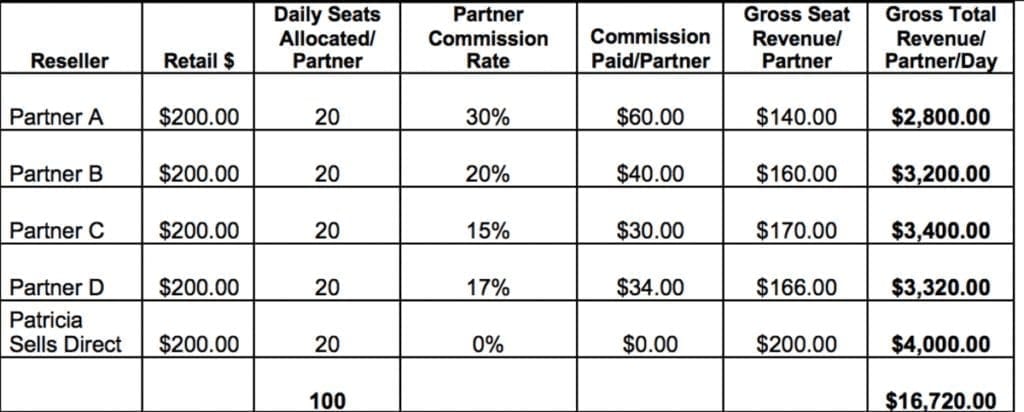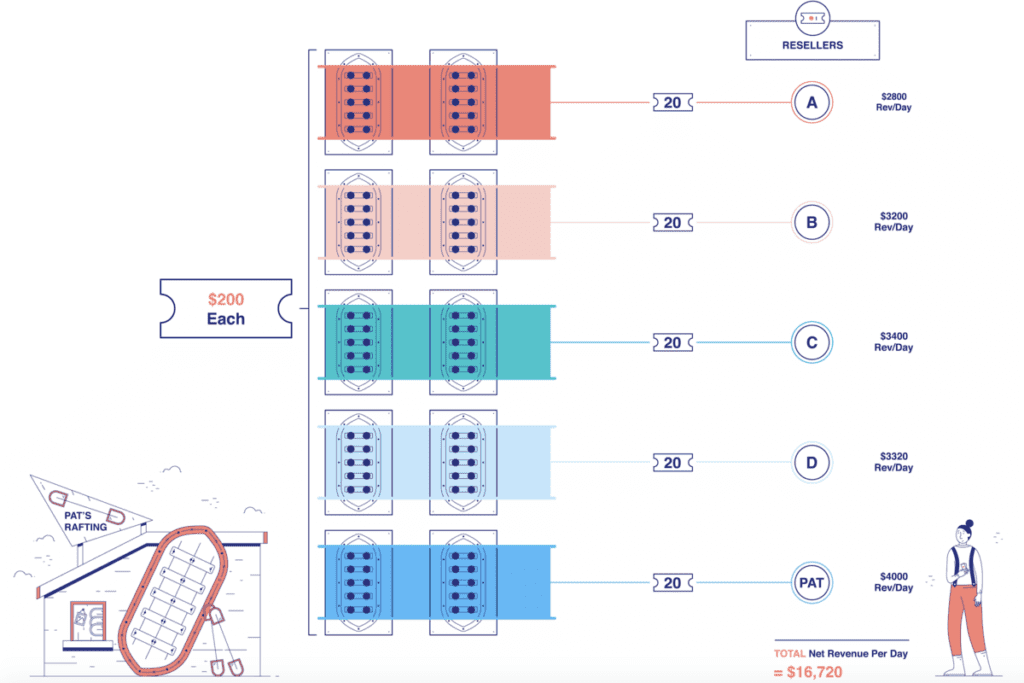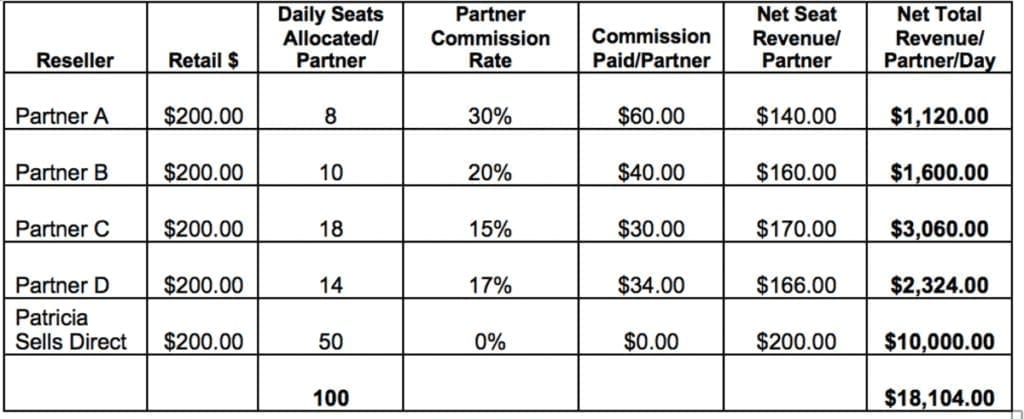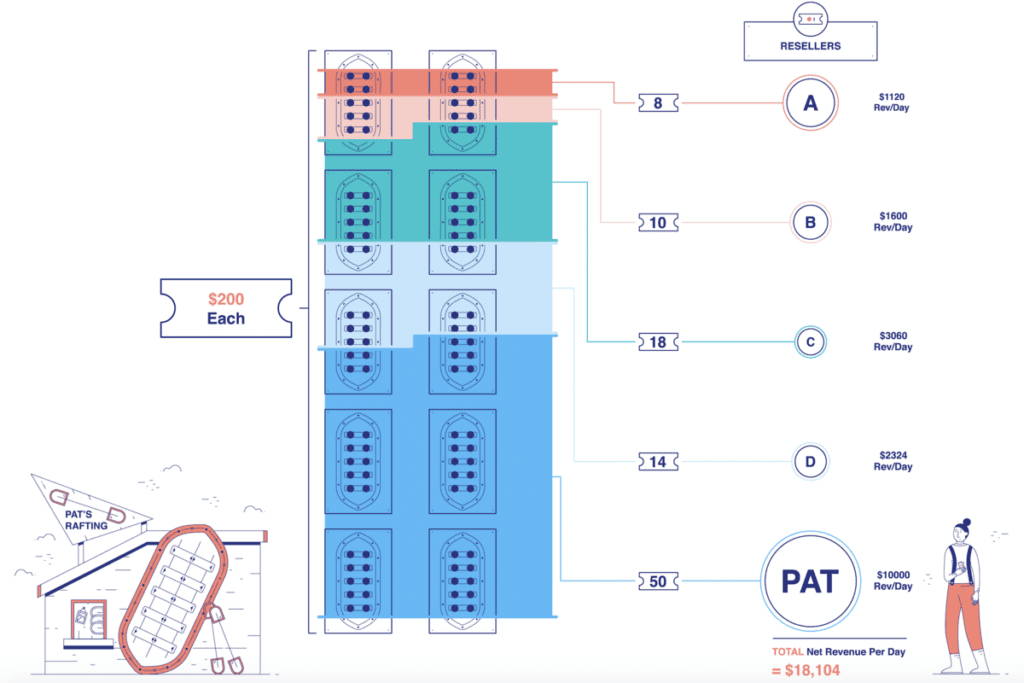Yield Management in Tours and Activities
by Melanie Meador, CEO
My background is in travel which got its start when I used to work in the hotel industry and when it came to optimizing our hotel’s revenues and improving the bottom line profitability, we used a system called yield management. Hotels have a finite number of rooms, and in an ideal world, the hotel could command and receive its top room rate every single time someone booked one of its rooms. But that’s not reality. These days, there are many different ways and many different places to find and book a hotel room – not to mention in most regions of the country many hotels in one place — and this affects how much revenue the hotel can generate per room. Think about it: if you were going to attend a 200-person wedding in a small town like Tobermory, Ontario, which has very few lodgings and zero hotels, you can bet no one is going to discount their rate for that wedding. On the other hand, if the wedding was in Houston, Texas in August, you could probably find a pretty good rate. It’s all about supply and demand.
Today, in the tours and attractions space, as it is with the hotel industry, maximizing revenue is not as simple as mere supply and demand. Because the Internet has made it possible for so many different channels – reselling partners and third-party websites – to sell your inventory, doing so can actually erode your bottom line. This may seem like reverse logic to you, so let’s break it down.
In an ideal scenario, you want to be able to make top dollar for every ticket, booking, or reservation you sell. This is even more important when you have finite inventory because you cannot make up for any discounts in rates by just selling more tickets that day. When you have multiple reselling channels and finite inventory, you benefit better if you can control the amount of inventory sold by particular reselling partners. In your peak season, for instance, when you know you can sell-out all the seats on your tour bus every day, you don’t want to give all of your inventory to a reseller who charges you top commission rates for each booking they make for you. Instead, the more optimal scenario for you would be to hold back the majority of your tickets to sell them direct to your customer and at the going rate where you keep all of the revenue (and therefore more of the profit).
This is where a yield management solution comes in. Yield management allows you, the operator, to control how much of your inventory gets allocated to which channel partners on any given day, for any given time slot. Yield management gives you the means to execute a profit-driven business strategy rather than strictly a sales-driven one, and the yield manager is the software that apportions your inventory according to your strategy. To illustrate what I mean, let’s use an example:
Patricia operates a whitewater rafting company. She has ten rafts and each raft can hold ten occupants (plus one guide) so Patricia can sell up to 100 seats maximum per daily outing. During her peak seasons, she sells out up to two weeks in advance. Patricia’s peak season is 20 weeks long, during which she runs outings seven days a week (140 total days). Her outings cost $200.00 per person. The popularity of Patricia’s outings has attracted four key reselling and OTA partners, and she’s had success selling through all of them. Because of this, Patricia has been dividing her inventory equally among all of her partners, including herself (20 seats allocated to each):


In her peak season, therefore, Patricia’s outings generate $2,340,800.00. Patricia feels that this has been a good strategy because she continues to sell out her outings, and she’s very proud of the company she’s built. But Patricia doesn’t realize that she’s leaving money on the table. She’s doing so well that she hasn’t thought about the revenue and profitability on each seat sold.
What if instead of allocating all her available inventory equally, Patricia were to approach the allocation more strategically, focusing more on maximizing her revenue per day? In that kind of approach, wouldn’t it make more sense for Patricia to keep more of the seat allocations to herself and give fewer to her partners? And even more so, to give less inventory to the partners to whom Patricia has to pay the highest commission rates? Envisioning a scenario like that, the new allocations may look like this, with Patricia generating $1,384.00 more dollars in total net revenue per day or $193,760 more net revenue dollars per year!


While this example may be simplified, you can see the value of managing your inventory to maximize your revenue. This kind of strategic inventory management can be a challenge to manage manually, particularly in your busiest times of year. That’s the beauty and value of a yield management solution that can automate the execution of this strategy for you. You enter the values and the yield manager takes care of the rest.
With a yield manager, though, nothing is set in stone. You can and should test and tweak your allocations to maximize revenue strategy. Sometimes you may want to dial allocations up or down, just to see what works better for your bottom line. If your top commission-charging partner also sells more inventory for you and faster, you can reconfigure your allocations when you need more help with bookings. Or, you can hold back even more inventory to sell direct until you get closer to the actual date, and then you can release the inventory to your partners to sell it off faster. The key point is that with a yield manager helping you allocate your inventory, you’re in better control of your revenues and ultimately your greater overall profit margins. Greater overall profit is good for business, and go for you.

